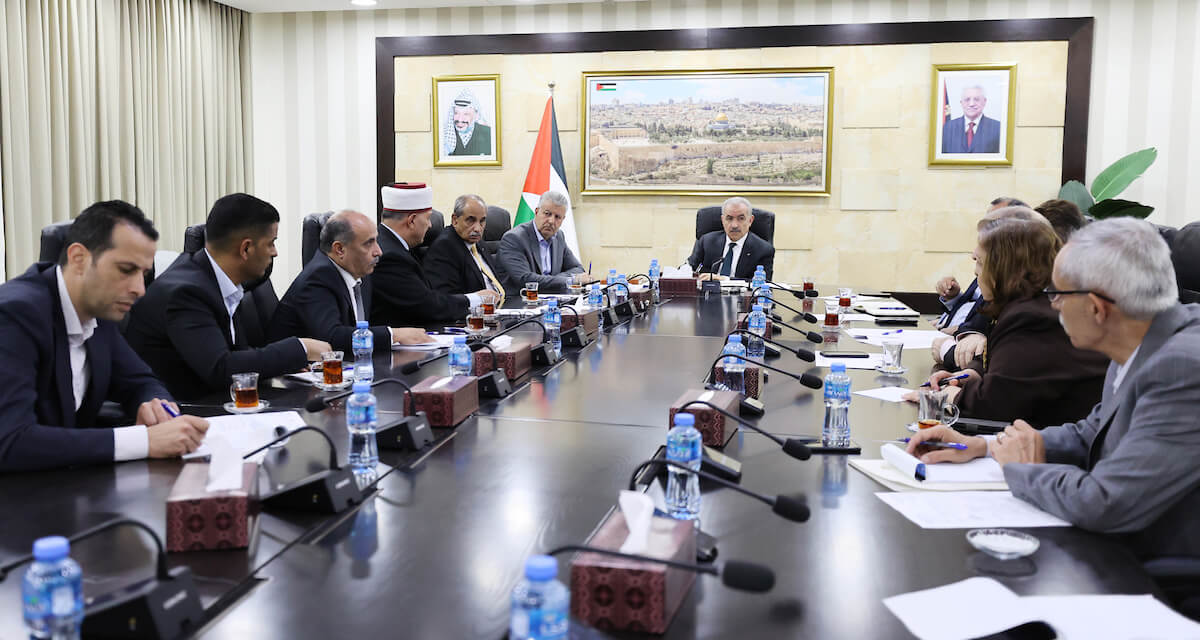As Israel’s 48-hour onslaught on the Jenin refugee camp last week entered its denouement, former Israeli Brigadier General Tamir Hayman discussed the operation’s objectives during an INSS podcast. He came away with two primary aims: the restoration of the Israeli army’s “operational freedom” — the ability of the army to enter any part of the West Bank unchallenged and unmolested by resistance — and, most notably, to facilitate the conditions for the return of the Palestinian Authority to the camp.
Hayman couched his explanation in the language of desiring to ameliorate the “lack of efficiency” of the PA in containing “the cycle of revenge” perpetuated by the Palestinian resistance, meaning that the army would have to go in and undercut the influence of the resistance groups by taking out their so-called infrastructure (their ability to manufacture IEDs and other means of resistance). But he leaves much unsaid in this formulation — the Palestinian resistance remains alive and well in the camp precisely because the operation did not aim to eradicate it but merely removed a few of its guns and eliminated a handful of labs. In other words, it’s unclear how this narrow and much-touted “achievement” would facilitate the return of PA influence.
The answer lies not in the tactical military objectives of the operation but in its broader political goals — to engage in a theatrical display of wreaking havoc and destruction in the camp, unrelated to operational necessity in the field. The army’s D-9 bulldozers tore up streets and demolished homes not only to satisfy the calls of the bloodthirsty Israeli right for retribution, but to create the opportunity for the PA to roll in with reconstruction aid. Whether this was an intentional part of the army’s operation is irrelevant — in reality, this is its Phase Two and the inauguration of Israel’s soft counterinsurgency effort.
This is also nothing new. After its destruction in 2002, Jenin refugee camp’s “urban redesign” took place amidst a concerted colonial counterinsurgency campaign. It brought back the PA security forces into the camp to police the resistance, while foreign money streamed in as part of what Linda Tabar calls “bureaucratic humanitarian aid,” turning Jenin into Tony Blair’s “model economic and security zone.” This is the same strategy that the INSS regards as the exercise of “soft power,” which in conjunction with military power (alternating between “the carrot and the stick”) is how the Israeli army’s Central Command has strived to maintain the “status quo” since 1967 — creeping colonization coupled with colonial pacification. It sees the continued existence of the PA as crucial to maintaining that status quo.
And the attempts at pacification are already starting. The UAE and Algeria have both pledged $15 million and $30 million, respectively, for the reconstruction of Jenin. All of it will be funneled through the PA.
After a PA delegation to the funeral of Jenin’s 12 martyrs was kicked out of the camp by mourners incensed at PA inaction, a ministerial committee was formed by presidential order to lead the reconstruction effort. Another Fatah delegation composed of members of its central committee returned on Saturday, July 8, to meet with members of the Jenin Brigade, the umbrella resistance organization comprised of resistance fighters from many factional backgrounds, including the Islamic Jihad’s Saraya al-Quds, Hamas’s Qassam Brigades, and Fatah’s al-Aqsa Martyrs Brigades. One of the members was seen telling the delegation that “our rifles are not politicized in anyone’s favor,” and that they are “pointed towards Jerusalem,” which was met with applause from the Fatah delegation. The day after that, yet another delegation made up of PA ministers also arrived and made the rounds. The PA presence started to be normalized.
In the background to all this, Israel’s national security cabinet met and decided to vote on Netanyahu’s proposal to “act to prevent the collapse of the Palestinian Authority,” which included economic measures to prop it up. The only ones opposed to this proposal were Itamar Ben-Gvir and Bezalel Smotrich (declaring “there will be no economic relief to the Palestinians”), whose absolutist positions will, according to the mainstream Israeli military-security establishment, lead to a “security disaster” for Israel.
The danger posed by the inauguration of the unofficial second phase of the Jenin operation is that it might serve as a precursor to de-escalating the resistance. What’s harder is that the resistance groups can hardly turn down aid to rebuild the camp — and nor should they — but as the aid flows in, the challenge to the resistance groups will no longer only be airstrikes and assassination missions, but a trojan horse waving a white flag and tempting them to give up their weapons in exchange for prosperity. Whether the resistance accedes to these pressures and goes the route of the Lions’ Den (many of whose members gave up their weapons to the PA in exchange for alleged amnesty) is uncertain. But if the Jenin Brigade remains staunch in upholding its resistance line, Israel’s onslaught will continue apace, alternating as it always has between military power and soft counterinsurgency.
Depending on whether the PA decides to crack down on the resistance or let it continue to exist in parallel to the PA, the resistance will either continue to maintain a presence in Jenin or be faced with the harrowing reality of being besieged from within and without. The resistance will have to strike a delicate balance between continuing to resist the Zionist colonial project and refraining from having to confront the PA head-on, which would risk a devolution into intra-Palestinian conflict.
Related posts:
Views: 0
 RSS Feed
RSS Feed

















 July 11th, 2023
July 11th, 2023  Awake Goy
Awake Goy 
 Posted in
Posted in  Tags:
Tags: 
















